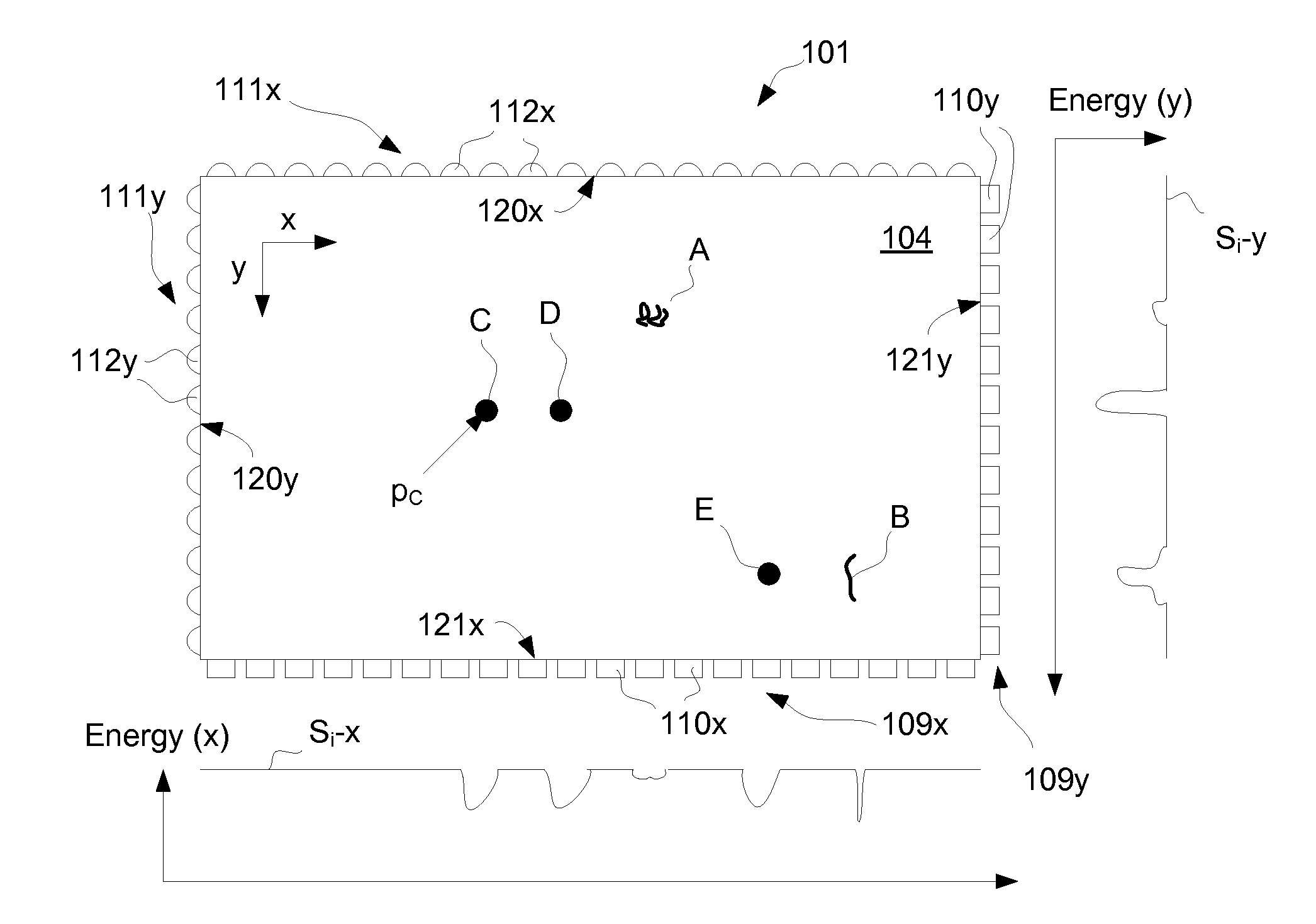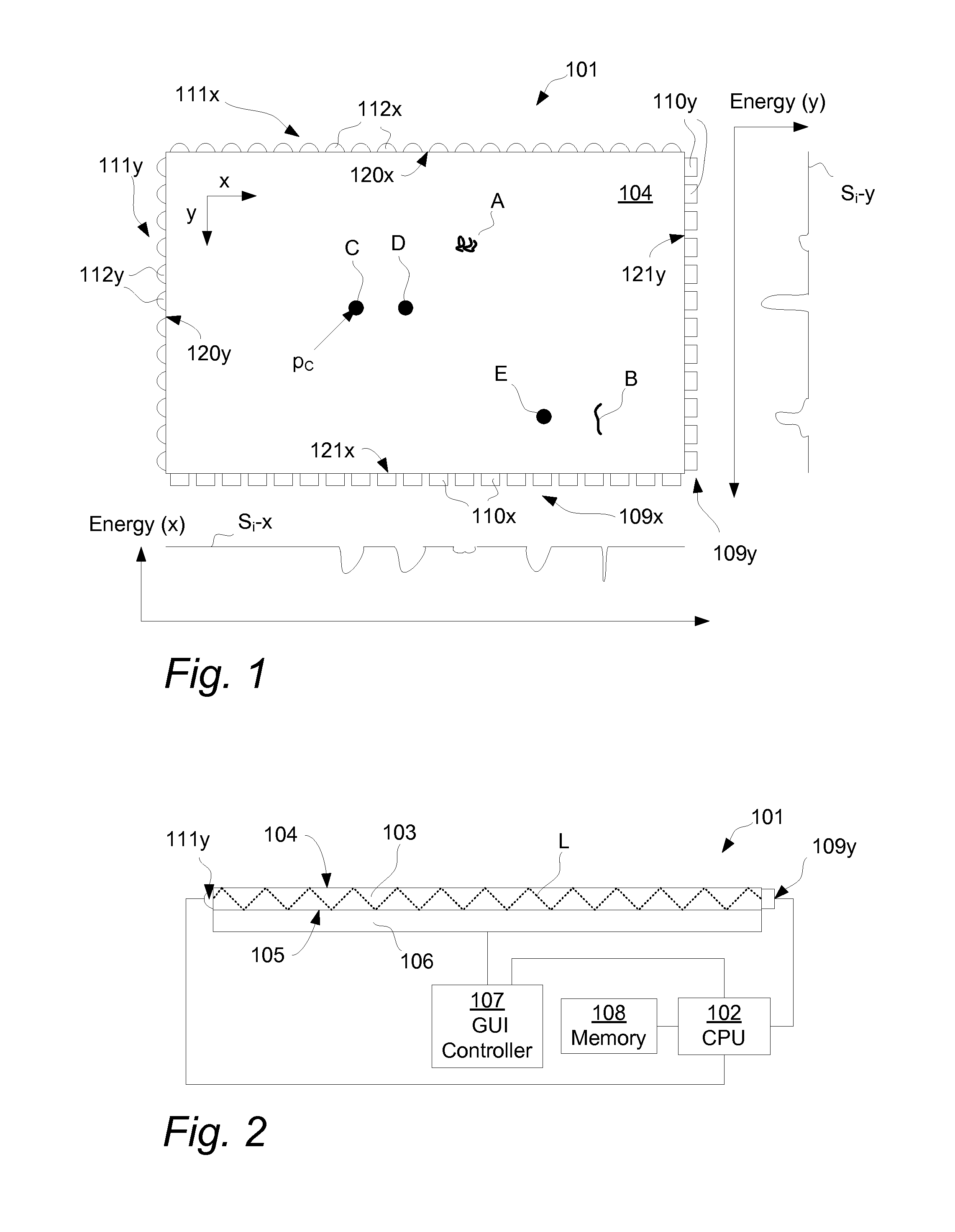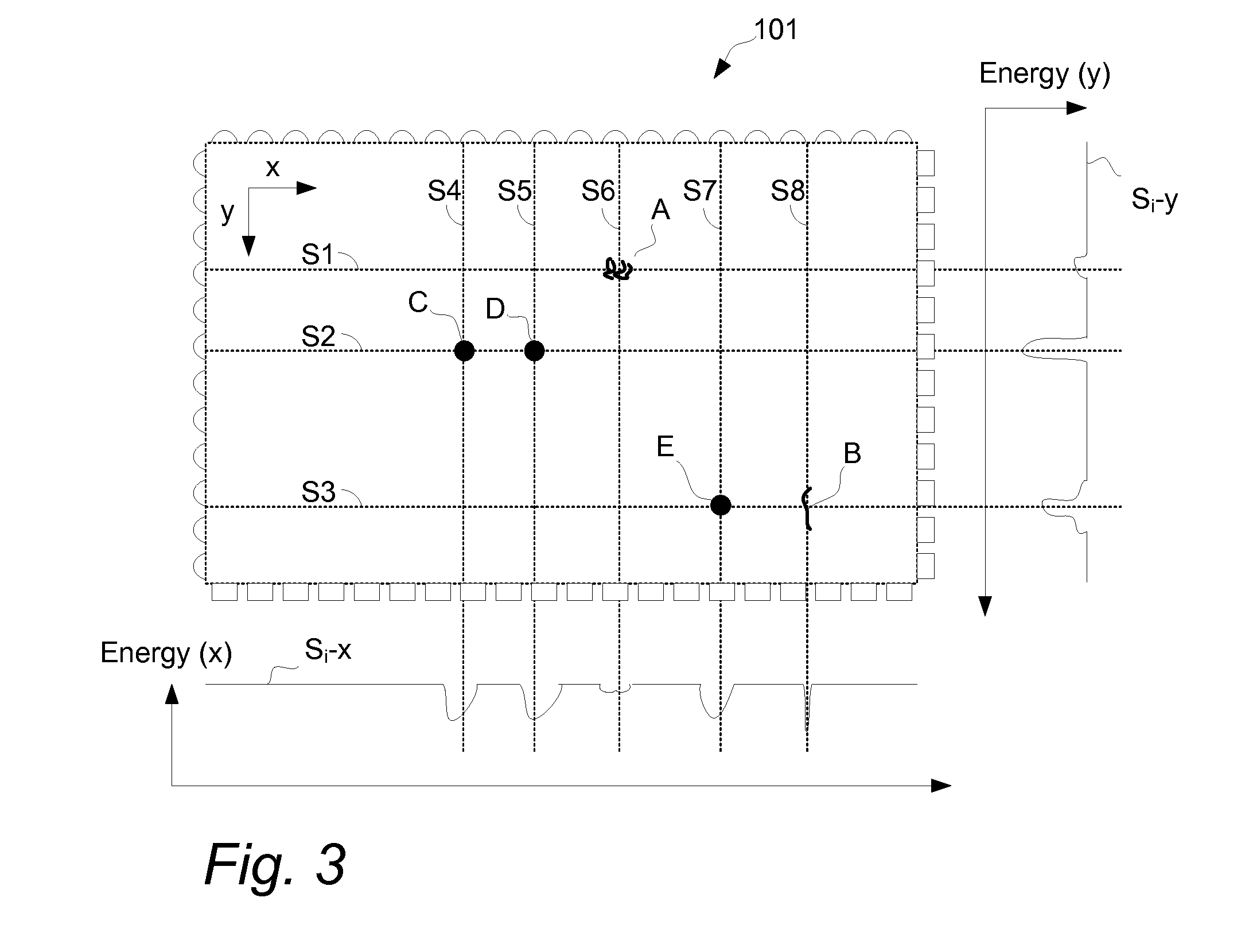Touch Surface With A Compensated Signal Profile
a signal profile and touch surface technology, applied in the field of touch surface with a compensated signal profile, can solve the problems of costly known ftir techniques, and achieve the effects of simple and efficient data processing, reduced impact, and accurate determination of the location of objects
- Summary
- Abstract
- Description
- Claims
- Application Information
AI Technical Summary
Benefits of technology
Problems solved by technology
Method used
Image
Examples
Embodiment Construction
[0059]FIGS. 1-2 illustrate an embodiment of a touch-sensing apparatus 101 that includes a light transmissive panel 103. The panel 103 may be planar or curved and defines a touch surface 104 and an opposite surface 105 opposite and generally parallel with the touch surface 104. The panel 103 is configured to allow light L to propagate inside the panel 103 by internal reflection and can have the shape of e.g. a rectangular, circular and elliptical plane.
[0060]Hence, a light propagation channel is provided between the touch surface 104 and the opposite surface 105 which in combination form two boundary surfaces of the panel 103. The touch surface 104 allows the propagating light L to interact with one or more touching objects (three objects C, D, E are shown) in the form of e.g. a finger or stylus. A contamination on the touch surface 104 in the form of a fingerprint A as well as a damage on the touch surface 104 in form of a scratch B are also illustrated. Here, the damage B can be re...
PUM
 Login to View More
Login to View More Abstract
Description
Claims
Application Information
 Login to View More
Login to View More - R&D
- Intellectual Property
- Life Sciences
- Materials
- Tech Scout
- Unparalleled Data Quality
- Higher Quality Content
- 60% Fewer Hallucinations
Browse by: Latest US Patents, China's latest patents, Technical Efficacy Thesaurus, Application Domain, Technology Topic, Popular Technical Reports.
© 2025 PatSnap. All rights reserved.Legal|Privacy policy|Modern Slavery Act Transparency Statement|Sitemap|About US| Contact US: help@patsnap.com



